2023-2024 PRAx Student Fellows
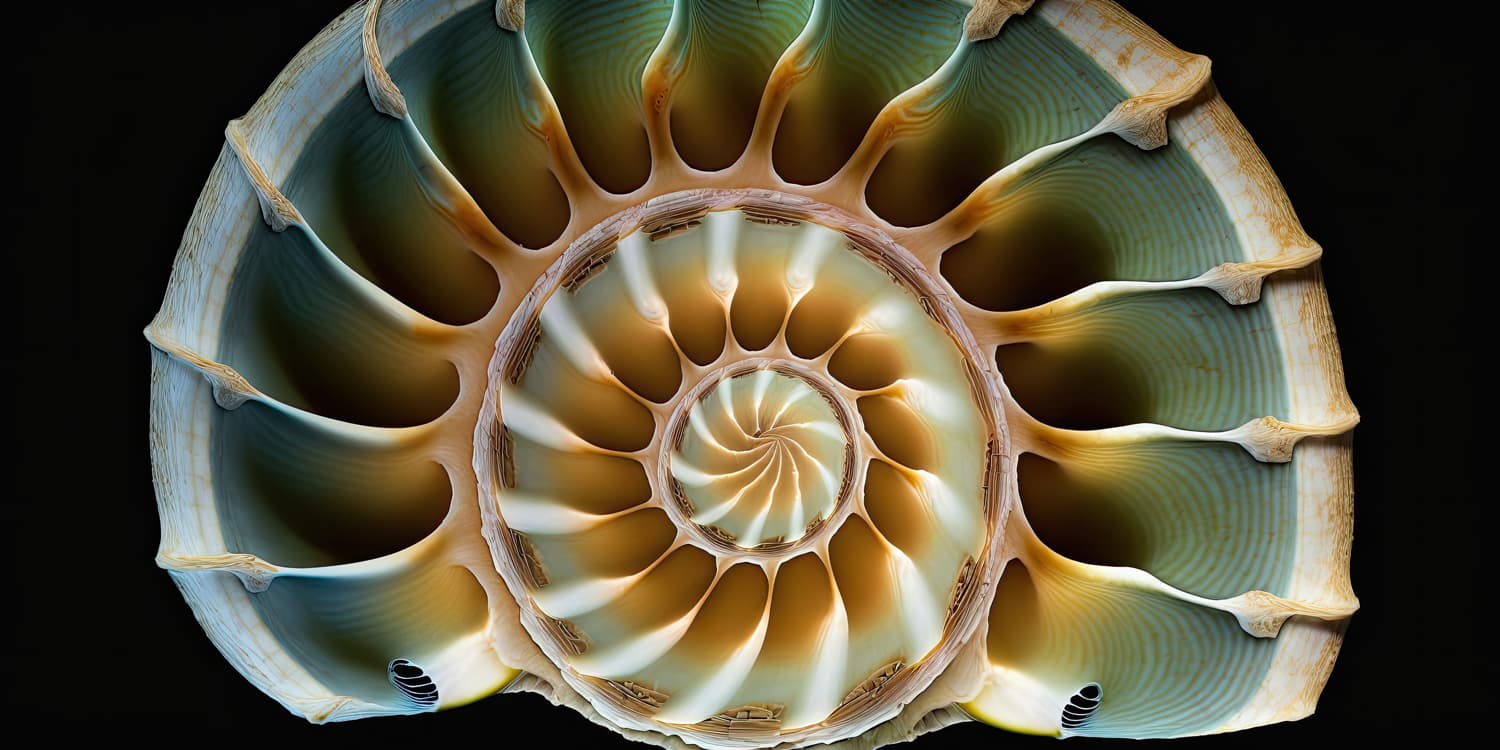
Available to undergraduate and graduate students at Oregon State University, PRAx Student Fellowships support creative interdisciplinary work at the intersection of two or more ways of looking at the world. Working with mentors from each area of study or practice, 2023-2024 fellows are developing projects in one of four tracks: Art+Science, Humanities+Science, Film+Science and Engineering+Art. An exhibition of work will be held at the end of spring term.
This program, launched by the Arts-Sci Faculty Group in 2021, previously supported a small group of student fellows interested in creating work at the intersection of art and science. Due to enthusiastic interest and cross-campus support, the program was expanded this year to accommodate more students working in a wider range of disciplines and interested in a greater variety of creative mediums and methods.
We appreciate our campus and community sponsors: College of Agricultural Science; College of Engineering; College of Earth, Ocean, and Atmospheric Sciences; College of Forestry; College of Liberal Arts; College of Science; OSU Honors College; Art about Agriculture; the Center for the Humanities; Roundhouse Foundation; Cyniped Fund; Spring Creek Project; Patricia Valian Reser Center for the Creative Arts
If you or your organization would like to become a sponsor, contact [email protected].
2023-2024 PRAx Student Fellows
FILM + SCIENCE
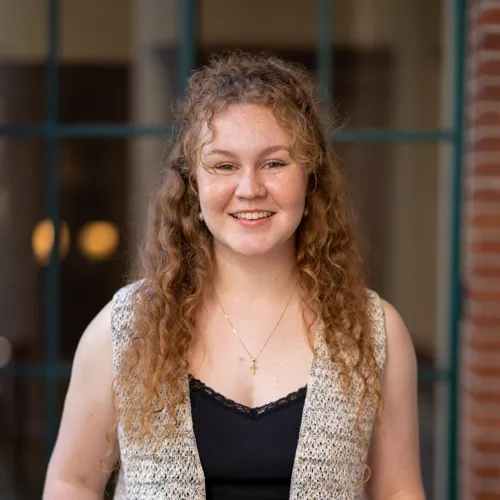
Lydia Dapkus believes in the power of storytelling and art to connect us with the natural world by creating a sense of empathy and commonality that inspires us to take action. She plans to build on previous work exploring the relationship between humans and marine environments to create a nonfiction short film about a marine ecosystem being adversely impacted by climate change.
Field: Undergraduate, Marine Studies, College of Liberal Arts
Mentors: David Baker, Kate Stafford

Henry Pitts studies the dynamics of a collaborative conservation effort at Lake Abert—a hypersaline lake in southern Oregon. When filled with water, Lake Abert serves as a source of revenue for brine shrimpers and as critical habitat and a food source for thousands and thousands of birds living and migrating along the Pacific Flyway. In recent years, however, Lake Abert has been going dry. Henry’s fieldwork for his project will involve sustained engagement with this landscape through critical inquiry and repetitive sport performance: he will run along the lake’s eastern perimeter during the drying season both as a physical journaling effort to document observed changes and as an act of intentional performative connection. Combining video footage of his runs with audio commentary on water conservation and governance efforts, he aims to create an immersive installation so others can experience the wonder and precarity of Oregon’s only saltwater lake.
Field: MS student, Water Resources Policy & Management
Mentors: Hannah Gosnell
HUMANITIES + SCIENCE
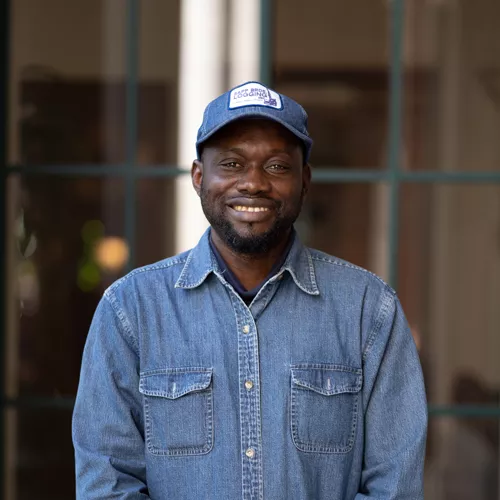
Gabriel Ayayia studies complex global environmental challenges that demand multi-strata engagements to discover and enact solutions. His project for this fellowship will explore ethical issues involved in food waste and loss. Specifically, he will consider how Ubuntu—a philosophy that emphasizes the interdependence of all living things—may offer community-based adaptation approaches to the problem. Combining research into Ubuntu philosophical principles with life-cycle analysis of post-harvest food loss, he plans to develop a holistic framework that local communities can use to address this complex problem.
Field: Dual Masters student, Environmental Science and Applied Ethics
Mentors: Patricia Fifita, Qingyang Wang

Lucinda Boyle has previously written nonfiction about beetles in art and literature, the connection between bees and music and mangrove forest restoration in Thailand. For her project, Boyle will combine her passion for journalism and scientific writing with her curiosity about bryophytes. She will develop a written article and photo series that showcases the diversity of mosses and explores what moss might tell us about ecosystem health in the Pacific Northwest.
Field: Undergraduate, Honors College, Natural Resources (Botany and Science Writing option), Dept of Forest Ecosystems and Society, College of Forestry
Mentors: Chris Johns, Bryan Endress
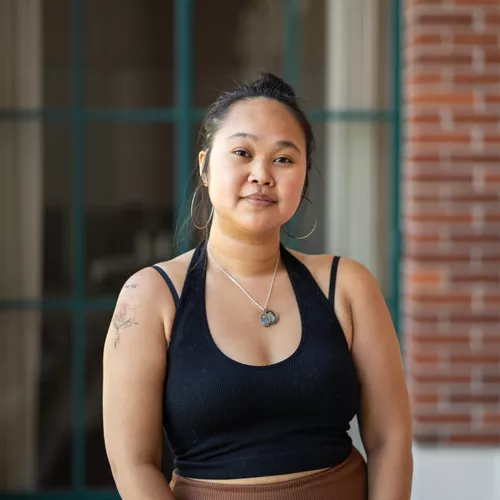
Elizabeth Nguyen is interested in all the ways humans deal with mortality. She will combine research into natural processes of decay, such as those occurring in the decomposition of wood, with perspectives from philosophy and contemplative studies to explore how death and dying impacts the way we live and the way we interact with others and the world.
Field: Undergraduate, Philosophy, College of Liberal Arts (School of History, Philosophy and Religion) and English (School of Writing, Literature and Film); Language Arts Teaching Option, College of Education
Mentors: Katelin Gallagher, Mark Harmon
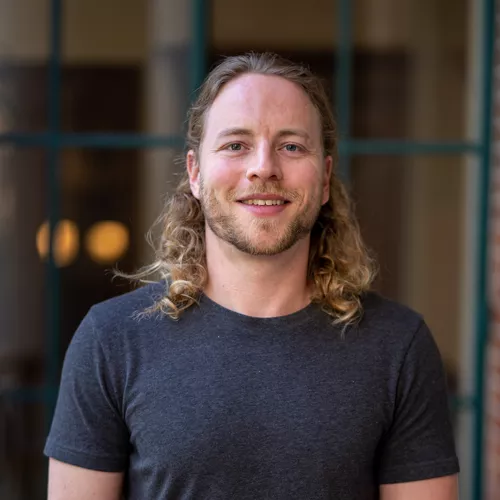
Matthew Vaughan is interested in the intersection of ocean conservation and science communication. For his fellowship project, he will create a collection of nonfiction works revealing the innovative and often hilarious ways marine scientists have had to make do in the field by running experiments with limited resources. This collection will appeal to all field researchers who’ve been inventive with thin-stretched budgets and will introduce non-specialists to the world of marine science in an accessible way.
Field: PhD student, Integrative Biology, College of Science
Mentors: Sarah Henkel, Tim Jensen
ART + ENGINEERING
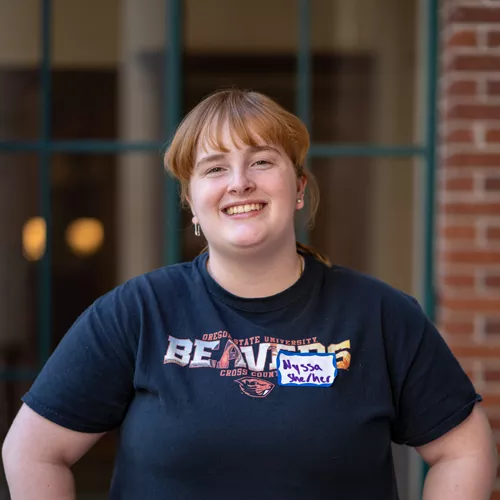
Nyessa Engebo will work with mentors to build on her honors thesis that engages concepts in K-12 STEAM outreach. She will continue researching scientific discoveries from each state and will create a children’s book intended to cultivate curiosity and a lifelong interest in discovery and creation.
Field: Undergraduate, Honors College, Bioengineering (School of Chemical, Biological, and Environmental Engineering), College of Engineering
Mentors: Skip Rochefort
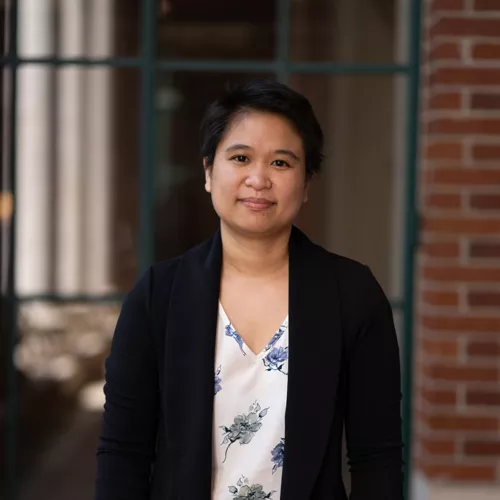
Nicole Fronda’s project combines her loves for creative writing and music composition with her interest in artificial intelligence and machine learning. Working with her mentors she plans to create a machine learning model utilizing the same logical specifications used in engineering complex systems to generate music and poetry. These outcomes will likely emerge as fragments and phrases that need to be crafted by a human artist to create a finished work. Fronda will craft the fragments and phrases into completed art in the form of musical representations of the logical formulas that helped generate them
Field: PhD student, Electrical Engineering and Computer Science, & Robotics, College of Engineering
Mentors: Houssam Abbas, Peter Swendsen

Eloise Thoreson works on developing solutions to our oil-based plastics problem. For her project, she will combine her interests in sculpting, design and polymer research to create a toy using a polylactic acid and hemp fiber blend—a durable, yet ultimately compostable, alternative to oil-based plastic.
Field: Undergraduate, Chemical Engineering, College of Engineering
Mentors: Skip Rochefort
ART + SCIENCE
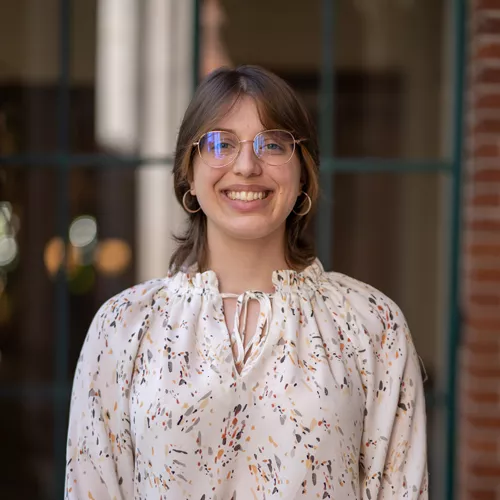
Celeste Anderle works in OSU’s Soil Health Lab and for the Art About Agriculture program. She is committed to building and participating in diverse interdisciplinary knowledge communities. For this fellowship, she will develop a project involving field drawings and scientific illustration of topics in wildlife conservation.
Field: Undergraduate, Fisheries, Wildlife, & Conservation Sciences, College of Agricultural Sciences
Mentors: Peg Herring, Luke Painter

Olivia Burleigh’s research focuses on coral bleaching and the molecular mechanisms that regulate the relationship between coral hosts and their algal symbionts. Olivia’s fellowship project will involve using her experience as a sculptor and potter to interpret this symbiotic relationship and to show the diverse beauty of corals, as seen through their branching structures, polyp size and intricate patterns.
Field: PhD student, Department of Integrative Biology, College of Science
Mentors: David Maddison, Jerri Bartholomew
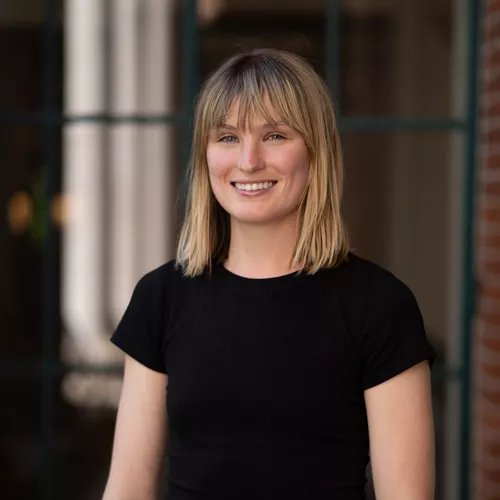
Delaney Chabot studies communities of intertidal organisms and their interactions. As a member of the Oregon Kelp Alliance, she’s dedicated to raising awareness of the critical need to restore Oregon’s kelp forests, which have suffered a catastrophic loss of canopy cover in recent years. For her project, Delaney will create a musical instrument out of dried bull kelp and will compose and record a piece of music showcasing the kelp horn and other “instruments” found on the Oregon coast.
Field: PhD student, Department of Integrative Biology, College of Science
Mentors: Bruce Menge, Alex Ellsworth
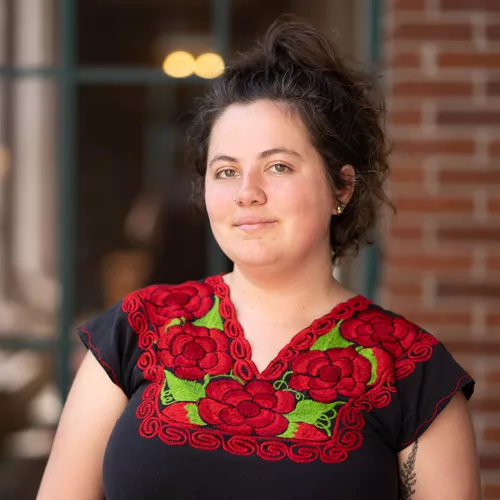
Jazlee Crowley studies the Bodhi tree and the unique symbiotic relationship it holds with its pollinator insect, the very tiny Fig Wasp. Because of the Bodhi tree’s history of reverence in Buddhism, it has been artistically represented for thousands of years. For her project, Jazlee will create a contemporary twist on this artistic expression and create a work interpreting the special biological bond of the tree and its pollinator while offering credence to its consecrate origins.
Field: PhD student, Integrated Biology, College of Science
Mentors: Dee Denver
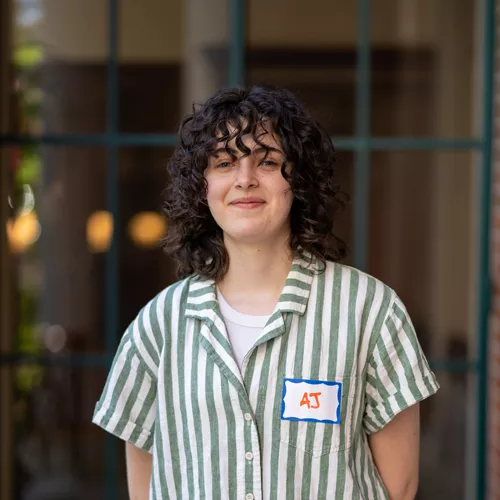
Arielle (AJ) Damiana is interested in exploring how art and science can enhance our understanding and experience of the world in mutually coactive ways. At Oregon State, she has studied circadian rhythms with the SHAID Sleep Health Lab and helped develop industrial pigments with the Subramanian Research Group. Currently, she’s fascinated by the complex processes at work in what appear to be simple entities. Her mixed-media project will engage the dynamism of cell structures—the cytoplasm, organelles and membrane—and creatively reinterpret functional interactions within one of the most well-studied biological mechanisms on the planet.
Field: Undergraduate, Honor's College, Department of Biochemistry and Biophysics, College of Science
Mentors: Alysia Vrailas-Mortimer, David Maddison
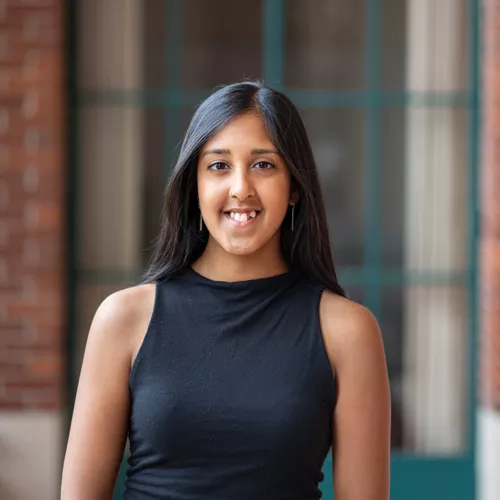
Nilanjana Das researches emerging diseases in salmonid hatcheries and the complex, interconnected variables involved—from hatchery rearing procedures and changes in riverine systems to pathogen life cycles. Her fellowship project will involve sculpting with polymer clay, resin, and plaster to signify varied environmental conditions and elements of the infectious bacteria, viruses and parasites that Pacific salmon encounter on their long, perilous journeys to the sea and back.
Field: MS student, Microbiology, College of Science
Mentors: Stephen Atkinson, Pete Goldlust

Anne Krone is a visual artist and scientist currently studying microbial ecology in Arctic lagoons. Conducting fieldwork on the northern coast of Alaska with the Beaufort Lagoons Ecosystems Long-Term Ecological Research program, she examines the influences of microbial activity on biogeochemical processes and seasonal and spatial changes in microbial communities within ecosystems subject to extreme seasonal variation as well as long-term effects of warming. She’s also committed to engaging artists and Inupiat traditional knowledge holders in north coast communities that depend on these ecosystems for survival. Her visual multi-media project will explore the interconnectedness of the microbial food web and types of trophic exchange—foundational processes in these Arctic lagoons being impacted by changing climactic conditions.
Field: PhD student, Ocean Ecology and Biogeochemistry, College of Earth, Ocean and Atmospheric Sciences
Mentors: Jerri Bartholomew, Mary Beth Leigh

Carina Kusaka wants to better understand how climate change and anthropogenic influences affect vulnerable wildlife and their habitats. She’s currently involved in research on Tufted Puffins, an iconic seabird listed as an Endangered Species in Washington state and a Sensitive Species in Oregon. These studies investigate climate factors that may be driving the loss and degradation of their breeding habitat and contributing to drastic population declines. For her project, she will work on writing and illustrating a book of fiction for children. The book will incorporate knowledge about the ecology and conservation of Tufted Puffins and will include characters that reflect the diversity of Oregon’s communities.
Field: MS student, Fisheries, Wildlife, and Conservation Sciences, College of Agricultural Sciences
Mentors: Don Lyons, Tara Kate Robinson
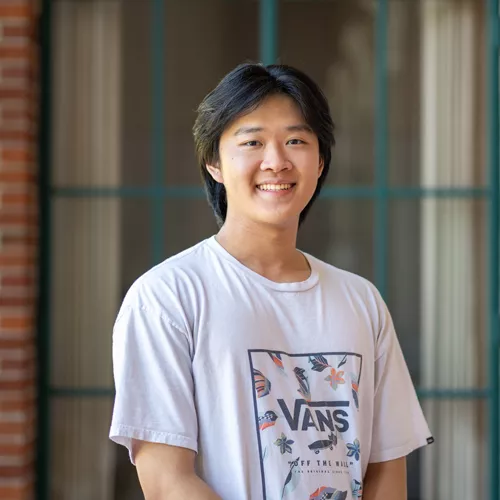
Ethan Makinster is a musician and scientist interested in the physiological effects of sound—especially in how music might be used to improve wellbeing by alleviating stress and anxiety. His project will explore the connection between music and mental health by using scientific research on certain frequencies (e.g., 432 and 528 Hz) and perceived features of sound (e.g., binaural and monaural beats) to produce a series of musical works that may help reduce stress levels.
Field: Undergraduate, Biochemistry & Molecular Biology, College of Science
Mentors: Dana Reason, Jessica Siegel

Cassidy Ochoa is passionate about storytelling, atmospheric science, and finding unique ways to communicate climate research with non-specialists. For her project, she will experiment with a variety of writing styles and genres to creatively interpret research on the changing relationships between global atmospheric circulation and cloud formation in a warming world.
Field: Undergraduate, Honors College, Climate Science, College of Earth, Ocean and Atmospheric Sciences
Mentors: Andrea Jenney
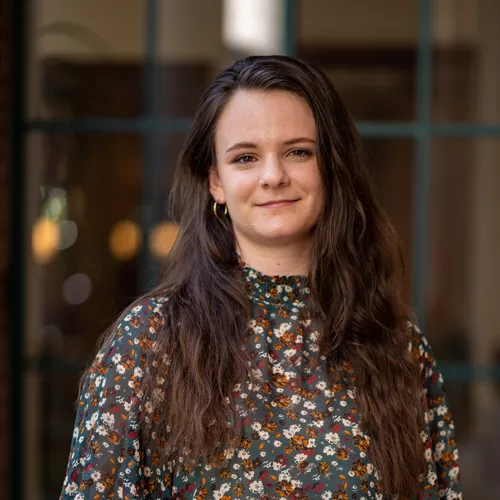
Molly Pearson is a woodworker, ceramicist, and sculptor interested in furniture design and fungi pigmentation. She currently works as an undergraduate research assistant in the Applied Mycology Lab. Her fellowship project will involve researching fungi and experimenting with pigmentation techniques to create a series of spalted wood and ceramic sculptures.
Field: Undergraduate, Wood Innovation for Sustainability (Art & Design), Dept. of Wood Science & Engineering, College of Forestry
Mentors: Seri Robinson, Renee McKitterick
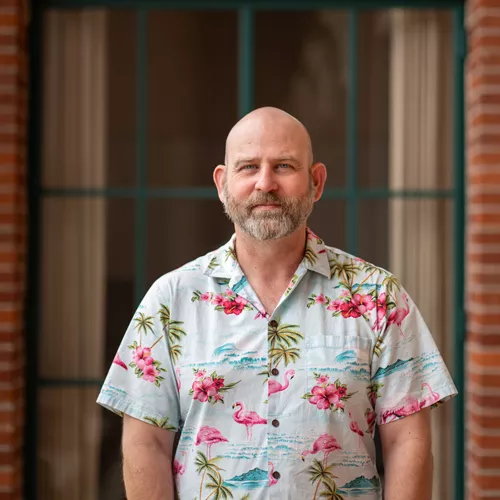
Jason St. Clair’s work in infrared photography is driven by a fascination with the interplay of light, color, and texture in the natural world. A recent Pacific Crest Trail hike inspired him to learn more about burned areas and clearcuts as well as the old growth and mature forests he encountered along the trail. His project will involve researching forest ecology and disturbance in the West Cascades and visiting field sites to produce a portfolio of infrared images revealing unique features and beauty invisible to the naked eye.
Field: Undergraduate, Photography & Digital Studio, School of Visual, Performing & Design Arts, College of Liberal Arts
Mentors: Fred Swanson, Kerry Skarbakka
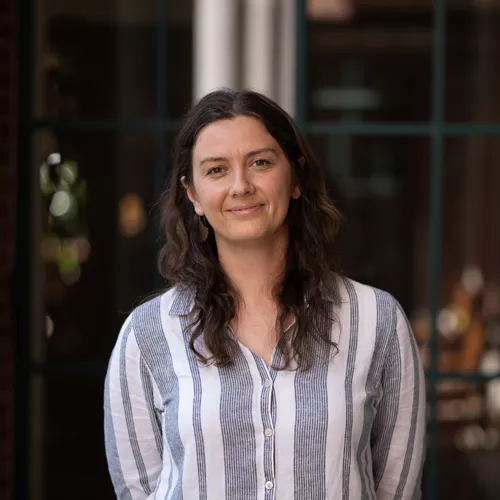
Dragomira (Draga) Zheleva is a printmaker and engineer who studies crop water demand and management to better understand the effects of climate change on food production. Her project will draw on her research into the relationships between plant water-demand and external factors like soil characteristics and weather events to create a detailed relief print of the beautiful processes involved in the plant–soil–water nexus.
Field: PhD student, Biological and Ecological Engineering, College of Engineering
Mentors: Yuji Hiratsuka, John Selker

